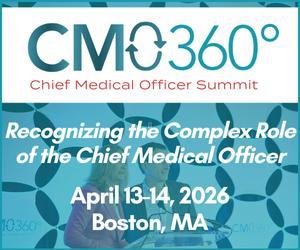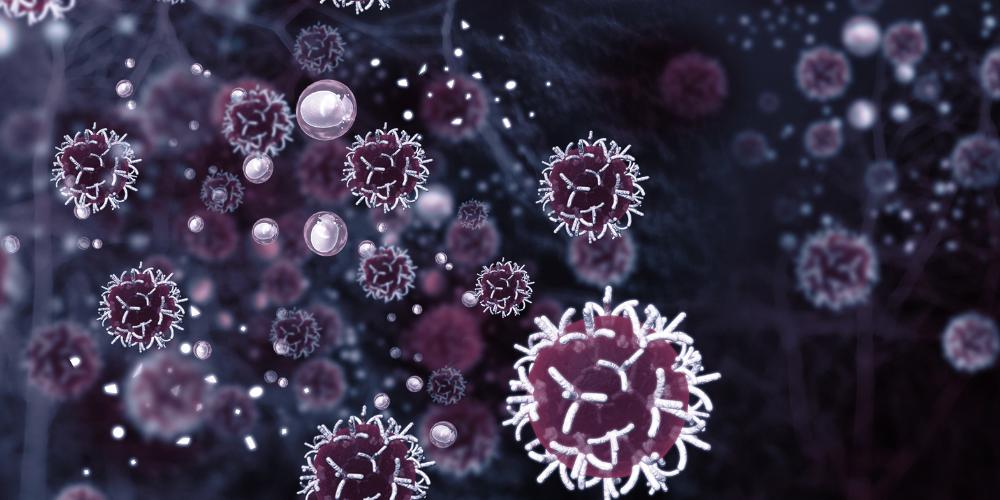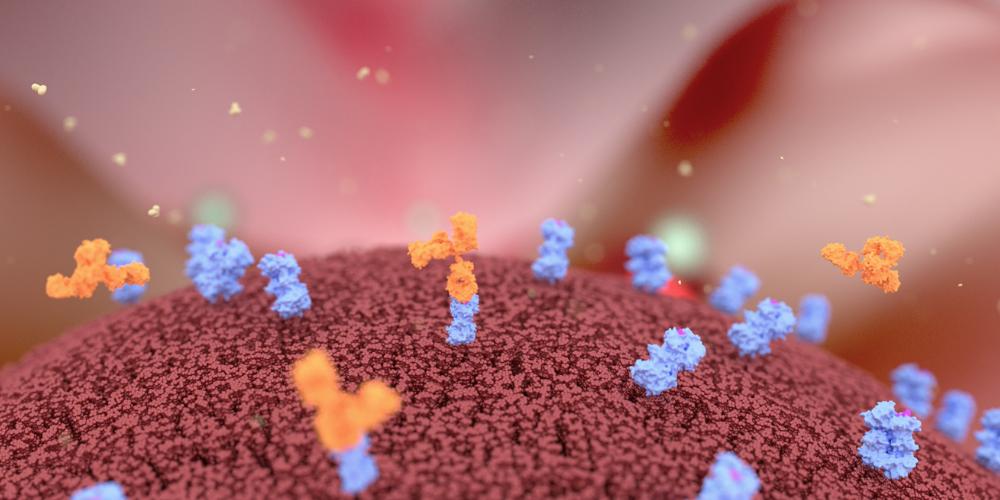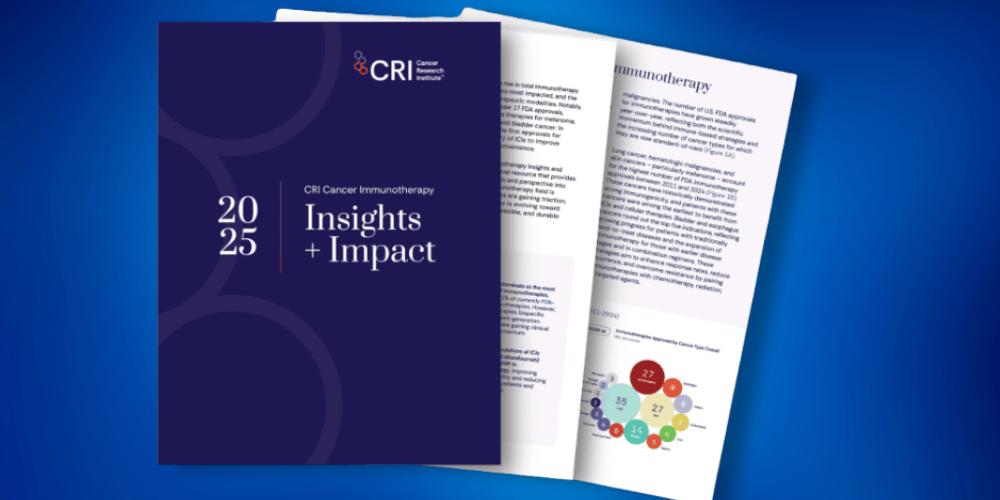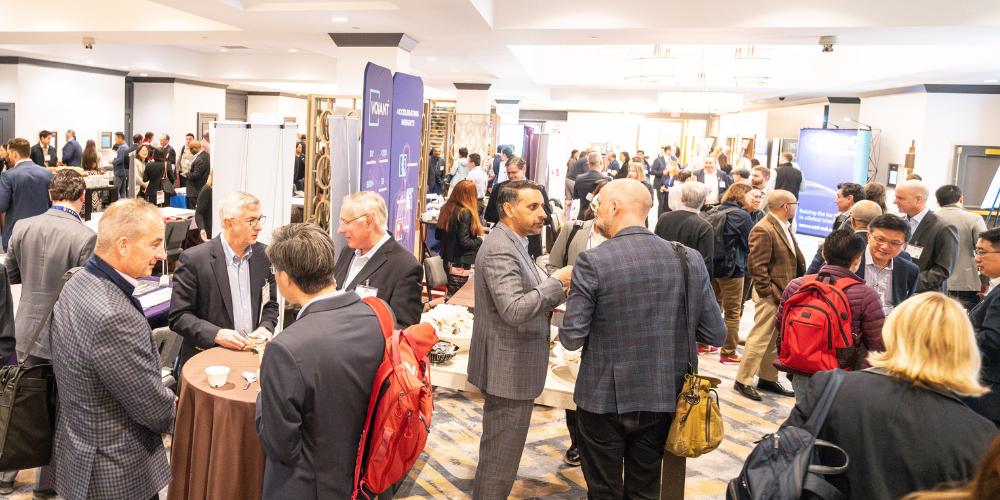UPenn's Dr Bruce Levine on Advancements in Cell Therapy Manufacturing
Bruce Levine, PhD, provides an overview on new developments in automation and manufacturing for cell therapy products, and where we’re falling short. He is the Barbara and Edward Netter Professor in Cancer Gene Therapy at the University of Pennsylvania Perelman School of Medicine.

What is the general status of CAR-T cell therapy manufacturing?
We have more patients treated than I think people realize. Specifically for CAR-T cell therapies, in the last few months Novartis and Kite both announced that they’ve treated upwards of 7,000 patients each. If you make estimates by looking at other companies and academia, and in other cell types beyond CAR-T, we are looking at between 20,000-30,000 patients. We’re having an expansion in access that people don't realize, but of course, we need to do better.
Are we on a trajectory to continue to meet that demand?
We're meeting some of the demand, but a fairly low percentage. We have six approved products in various blood cancers right now. There's an estimate out there that only about 20% of patients that could be eligible for those approved products are actually receiving them. That can be due to a variety of factors such as patients not being educated about the possibility, or referring oncologists are not educated on the availability, or it's an issue of transit to a clinical site. We have many patients, particularly in rural areas, that aren't within an easy drive of a clinical site.
There is also a backlog for some of the providers and some of the companies in being able to allocate slots for patients even at the clinical sites in the biggest cities or the highest profile academic centers.
"There's an estimate out there that only about 20% of patients that could be eligible for those approved products are actually receiving them."
What is the current timeframe for CAR-T manufacturing?
For allogeneic products, those are available pending patient screening. Those are produced in advance. It may take longer to make a lot of allogeneic products, but they are available at the point of care or on-demand from manufacturers.
For autologous CAR-T, that turnaround time can range from two to three or even four weeks. That depends on patient factors, as well as product factors. For tumor infiltrating lymphocyte therapies, that's longer. It's generally at least six weeks, sometimes 12 weeks. Companies and developers are working on bringing that time down.
Are there new developments in shortening manufacturing time?
The ones in the clinic are, for example, Novartis T-Charge, which is a two-day product. We have a three-day CAR-T product that is in clinical trials and we will be presenting on it at the end of the year. There is a Chinese company, Gracell, that has a one-day product. We've published ourselves on a one-day product that's in development. Previously, the average length of time for culture was in the range of 8-12 days.
Do the shorter culture times result in the same level of potency?
We perform all of the same release testing, as we do on our 8-, 9- and 10-day process. The challenge is when you have a one-day process, that product is still changing. In fact, the gene – if you’re using a lentiviral vector – may not be yet integrated into the genome of the cell.
The question is, then, “How do you measure that transduction efficiency? How do you measure the CAR expression?” The greatest challenge would be in the potency assay. For a cell that is still changing: how do you have an assay that satisfies the regulatory requirements for potency assays?
"The greatest challenge would be in the potency assay. For a cell that is still changing: how do you have an assay that satisfies the regulatory requirements for potency assays?"
Do we have an answer to that yet or is that still to be solved?
In general, the path forward would be a potency assay that correlates with activity: either by a correlation with an in-vitro assay or in-vivo activity that itself correlates with clinical response.
You’ve spoken about automating certain processes in manufacturing for CAR-T. Can you expand on new developments in bioreactors?
The types of bioreactor systems that have either been used or developed for CAR-T include the Prodigy from Miltenyi, the Quantum from Terumo, the Cocoon from Lonza, the X3 from Adva. Solaris Cellares is a company also developing an automated bioreactor. and then Ori Biotech, where I serve on the Scientific Advisory Board, will be announcing this fall their automated bioreactor. Then we have the other solutions, the G-Rex, and WAVE, which is the bioreactor from Cytiva, and Thermo Fisher devices.
You have to look at these bioreactors – these automated devices – as not uniform in terms ofthe unit operations that they will cover. We have the collection, we have separation and enrichment, we have washing, we have activation and expansion, concentration, washing and formulation and fill. Some of those devices will do most of those unit operations, some of those will do a few. Some of them will do more than others.
Most often, what is missing would be the formulation and fill. Perhaps some don’t have the washing, and some have everything but you need to add on modules. Employing those devices is at the discretion of the user. Maybe they need some flexibility, and they want to string together devices, so that they have the ability to move forward in a more customized collection of unit operations. We have the Terumo Finia and the Sexton Signata available for formulation and fill, so there are more options now to do that.
What is the balance between automation and human touch?
It depends on what stage of development you are and if you’re in industry or academia. Industry, particularly for the approved products, or going to an approved product, you need a process that is locked. That points you towards automation.
At the earliest stage, and particularly in academia when you're in the research and development and innovation and discovery stage, flexibility is pretty much required. You may be interested in automation, but automation that can give you flexibility, or a collection of devices that together give you automation, but still allow for flexibility and innovating in your process.
Pivoting to your own work: You were a part of a paper on anti-CD19 CAR T-cells in combination with ibrutinib for the treatment of chronic lymphocytic leukemia. What are the learnings from that research?
There is a pretty wide disparity in the response rate depending on the disease. The first approval of Novartis’s Kymriah was pediatric acute lymphoid leukemia. There was a one-month complete response rate north of 90%. Even at two years and three years, we're looking at a 65% response rate.
In lymphoma, that's not as high. In chronic lymphoid leukemia, that's even more challenging, with a fairly low complete response rate on the order of 25-29%.
Why was there such a low response rate?
Chronic lymphoid leukemia is a fairly immunosuppressive cancer that also induces defects in T cells. We find those T cells have defects in their signaling; they have defects in the repertoire. But it turns out that in patients who are on ibrutinib, a separately approved drug for chronic lymphocytic leukemia, the drug repairs some of those defects in T cells, even if the patients are failing ibrutinib.
We decided to design a clinical trial where patients are on ibrutinib. It turns out that it vastly improves the clinical response rate. Here is something that's a conventional drug, it's a Bruton's tyrosine kinase inhibitor, that as a side effect, improves the function of T cells. We have other examples of that. In fact, I've been keeping a running list, and that list is somewhere between 20 and 30 approaches long. At the University of Pennsylvania, we have a trial in prostate cancer, where we have included not only a CAR, but a dominant negative knockout of the TGF-β receptor in prostate cancer.
"You have to think of cancer from an evolutionary perspective: those cancers that succeed have developed ways to hide from and suppress the immune system."
Why did you focus on prostate cancer?
It turns out that prostate cancer cells secrete high levels of TGF-β. That inhibits T-cells. You have to think of cancer from an evolutionary perspective: those cancers that succeed have developed ways to hide from and suppress the immune system. We've got to take that next step and address those ways that cancers hide from and suppress the immune system.
What is the role of ibrutinib in this regimen: to boost the number of healthy T-Cells for CAR-T harvesting or to recruit healthy T-cells to fight alongside CAR-T?
Both actually; we observe that Ibrutinib-exposed T cells exhibit superior proliferative capacity, survival and effector cytokine production. We know the end result, which is that we have a higher number of healthier T cells, but we don't know the molecular mechanism of action of exactly how that is occurring.
You were a part of a paper on leukemia remissions with persistence of CD4+ CAR T cells. Can you tell us a little more about the findings of that research and what its implications could be?
This is a report on the first two of three patients that we treated in 2010. This was our first CAR-T cell clinical trial in cancer. In the two patients with CLL in this report, we were expecting to see persistence in both CD4 and CD8 T cells. Much to our surprise, we saw early on the engraftment and persistence of CD8 T cells. But over time, the CAR-T cells that we were able to observe were CD4 T cells. Those CD4 T cells were dividing and functional.
That doesn’t mean that there aren’t CD8 T cells somewhere at some level. Of the total body T-cells, only 2% are in the peripheral blood, and a few more percent are in the bone marrow. There are many more T cells in the secondary lymphoid tissues, the lymph nodes and the gut, that are not easy to assay. We have a small sliver of the sky, if you will, but we still certainly don't have the total picture of every T cell in the body.
What do you see as the next step in expanding and optimizing CAR-T?
I think you're going to see these improvements that I've referred to in automation and in enhancing the potency, whether it's through a dominant negative TGF-β receptor or ibrutinib, or the addition of small-molecules or cytokines.
We’re also going to see combination approaches. Those can include checkpoint antibodies, a type of vaccine, radiation therapy, or – in a trial that we have open now – in combination with an oncolytic virus. When you think about it, you're using combinations of ways to overcome those strategies that tumors used to suppress and hide from the immune system.
What is the advantage of pairing with an oncolytic virus?
An oncolytic virus is a relatively blunt tool. But the advantage of it is that it not only specifically targets tumor cells, but also leads to the lysis of those tumor cells to release antigens that may not be encoded in a CAR or a bispecific T-cell engager or some other strategy. And by releasing those antigens, that activates both the innate and adaptive immune system, signaling the T cell receptor.
The vast majority of autologous cell therapies retain their endogenous T-cell receptor. That repertoire can potentially see one of those other antigens that are released by oncolytic viruses. There's a paper from Dr Carl June and Dr Sonia Guedan that reports a combination of a CAR-T cell with an oncolytic virus that itself encodes a bispecific T-cell engager. That is really a three-for-one: the CAR, the BiTE and the oncolytic virus.
For more information on IO360º Summit, click here.




